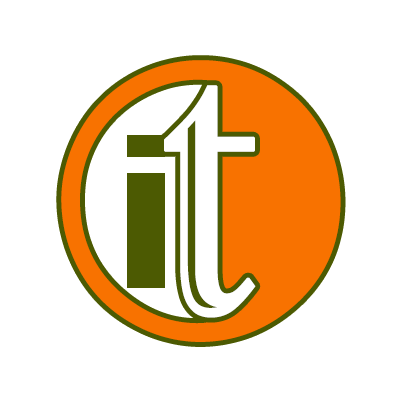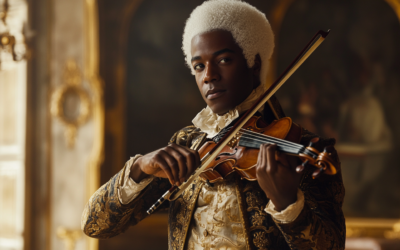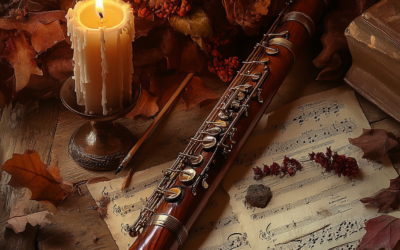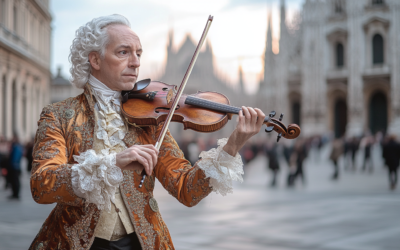The Truth Behind Mozart’s Canons
Simplicity, Errors, and the Myth of Perfection
Mozart is often praised as a master of form and complexity, but his canonic output tells a different story. Of the few canons he composed, most are surprisingly simple, often for equal voices and in unison.
However, two canons, K.553 and K.554, stand out not for their brilliance, but for their errors in counterpoint. Additionally, the myth surrounding the canon “V’amo di cuore teneramente” K.348 (K.6 382g) is finally debunked—Mozart never completed it.
The truth about these works paints a less flattering picture of the composer during this period.
Mozart: The Fall of the Gods
This book compiles the results of our studies on 18th-century music and Mozart, who has been revered for over two centuries as a deity. We dismantle the baseless cult of Mozart and strip away the clichés that falsely present him as a natural genius, revealing the contradictions in conventional biographies. In this work, divided into two parts, we identify and critically analyze several contradictory points in the vast Mozart bibliography. Each of the nearly 2,000 citations is meticulously sourced, allowing readers to verify the findings. This critical biography of Mozart emerges from these premises, addressing the numerous doubts raised by researchers.
"The errors in Mozart’s canons, from contrary octaves to parallel fifths, suggest a composer far from the technical perfection often attributed to him."
Mozart: The Fall of the Gods
Mozart is revered as a genius in all aspects of musical composition, but the reality of his canonic output may surprise you. Among the few canons he composed, most are simple, written in unison for equal voices, with little to no complexity. These are far from the intricate counterpoint often associated with his larger works.
Take, for instance, Canone K.553 and K.554, both of which belong to the sacred music genre. K.553 draws on a pre-existing Alleluia melody, while K.554 uses only two words from the Ave Maria. A popular tale claims Mozart composed the latter on the visitor’s register at a Bavarian convent—a charming story that turns out to be nothing more than an invention of the inscription added in 1813.
In reality, the Canone dell’Ave Maria was composed in 1788, during Mozart’s 32nd year. Yet, when compared to his earlier work, it shows signs of regression. The melody disobeys classical counterpoint rules: the vocal line jumps erratically from low to high registers, introduces dissonances, and features awkward harmonic transitions. The entire piece is anchored in F major, with only a single passing modulation. Mozart, by this stage, should have known better, especially given the polished works he produced in that same year.
The errors are glaring. Contrary octaves, parallel fifths, diminished fifths—it reads like a checklist of mistakes no 18th-century composer should have made. These failures are incompatible with the rest of Mozart’s output in 1788, a year marked by his great symphonies, which followed the strict compositional rules of the time.
K.553 fares no better. While the melody flows through stepwise motions and broader notes, the harmonic structure is riddled with unresolved dissonances and awkward chromatic sequences. Simple modulations from C major to A minor offer little in the way of ingenuity, and once again, Mozart fails to meet the basic expectations of counterpoint. The piece is littered with parallel fifths and octaves, with dissonances that clash in a way that suggests not innovation, but error.
One rare exception is V’amo di cuore teneramente K.348, written in G major for 12 voices divided into three four-part choirs. Here, imitation takes center stage, but even this work is not without its issues. Mozart left the piece unfinished, and it was later completed by Maximilian Stadler. Constanze, Mozart’s widow, even confirmed in a letter to Johann Anton André that Stadler was responsible for the missing sections. So, even this more elaborate canon does not fully belong to Mozart.
Ultimately, these works challenge the myth of Mozart’s perfection, revealing that even in his later years, his compositional skills were far from flawless.
You May Also Like
The Echo of the Pummerin Bell
The powerful resonance of the Pummerin bell in Vienna may have influenced Mozart’s compositions, particularly Sarastro’s arias in The Magic Flute.
The Hidden Influence of Joseph Boulogne, Chevalier de Saint-George
Joseph Boulogne, known as the “Black Mozart”, was shaping the future of music while Mozart was still struggling for recognition in Paris. But history has buried the significant influence Saint-George had on Mozart’s career, erasing his pioneering style from the narrative.
The Forgotten Viennese Quartets
Attributing Offertorium K.34 to Mozart is not just misleading, it reflects the careless methods used by 19th-century scholars to inflate his legacy. Without an autograph or solid evidence, this work should not be considered part of his output.”
Mozart’s Bassoon Concerto: A Question of Authorship
The Bassoon Concerto K.191 raises more questions than it answers. Long thought to have been composed for a Munich bassoonist, new evidence suggests Mozart had no clear performer in mind. The concerto’s disjointed movements and other dubious compositions attributed to Mozart add further complexity to his legacy
The Uncertain Origins of Mozart’s Early String Quartets
Mozart’s so-called “Milanese Quartets” (K.155, 158, and 159) have long been subject to debate, primarily due to their ambiguous instrumentation and structural weaknesses. Were these works part of a larger series of orchestral divertimenti, hastily repurposed as string quartets? The answer remains elusive, reflecting the young composer’s struggles to find his own voice.
When the Myth Collapsed
Vienna exposed the myth: La Finta semplice was riddled with errors, and Wolfgang’s supposed opera genius was nothing more than Leopold’s fabrication. With their reputation in ruins, father and son turned to Italy, hoping to rewrite history.







